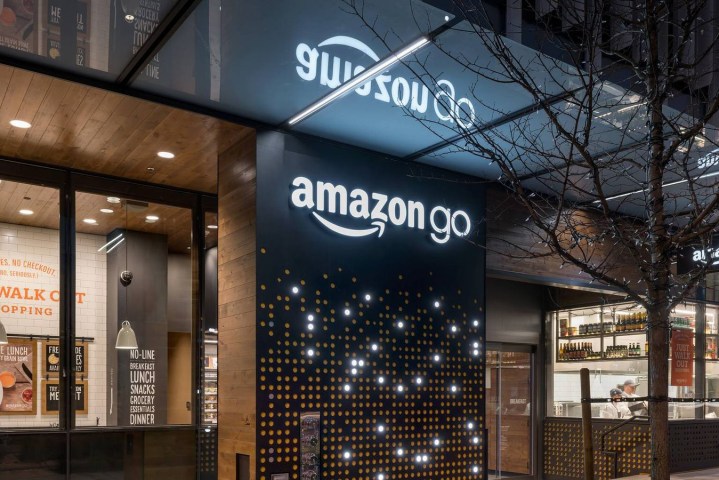
Although it might feel a lot like shoplifting, you will of course be charged for each item you put in your bag. You didn’t think Amazon was giving stuff away, did you?
The store’s “Just Walk Out” sensor-based technology detects when you pick up something from the shelf and, when you leave the store, charges all of your items to your account.
While the Seattle company continues to refine Go’s in-store technology with a view to rolling out the concept to more locations, there’s talk that it’s also planning a far larger version of the high-tech store, with robots doing much of the work.
The supermarket might cover floor space of up to 40,000 square feet and, alongside the robots, be staffed by between three and 10 employees at any one time, an individual claiming to have knowledge of the plan told the New York Post this week.
Such a location would comprise two floors, with the first floor offering around 4,000 “goods that shoppers typically like to touch [such as] fresh fruits and vegetables, eggs, meats and cheeses, and grab-it-and-go stuff like beer and wine,” the source said. The second floor would have an army of robots picking and packing from a larger range of items — up to 20,000 different products – fulfilling online orders made by the shoppers downstairs or from people online at home who then drop by later to collect their items.
Staff responsibilities would include refilling shelves on the first floor, while there could also be someone on the door to greet customers, and possibly chase down thieves who try their luck in the sparsely staffed store. Greeters may also be required to politely persuade non-Prime members to sign up to Amazon’s paid membership program — or its grocery-focused Prime Fresh service — for extra benefits.
While Amazon’s smaller Go store is already up and running in Seattle as part of a trial, the company refused to confirm to the Post that it had plans for a much larger version.
However, if the source proves reliable, Amazon’s plan to automate the store with robots will come as little surprise to many observers. The ecommerce giant has already invested heavily in robotic technology, which, like many big companies, it’s using to cut labor costs and improve efficiency. And no doubt you’ve heard of its delivery-by-drone plan, which will replace the need for human-made deliveries within about 10 miles of an Amazon fulfillment center … if that particular project ever comes to fruition.


